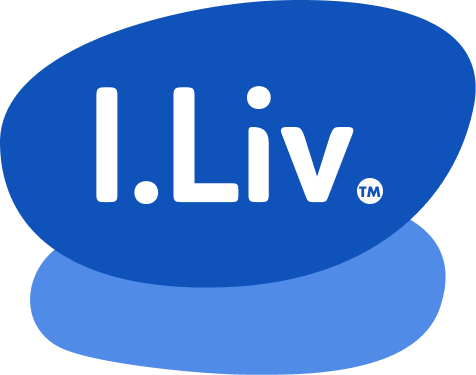Today’s workforce is increasingly confronted with burnout, a condition that erodes job satisfaction, productivity, and overall life quality. Amidst this growing concern, innovative well-being programs emerge as a beacon of hope. Tailored to address the multifaceted nature of employee health —spanning mental, physical, and emotional wellness— these well-being programs are not just about alleviating stress but fostering an ecosystem where resilience and job satisfaction can flourish.
By weaving self-care programs, mindfulness practices, stress management workshops, and diverse wellness activities into the corporate tapestry, organizations can cultivate a culture of resilience, significantly enhancing the work-life harmony of their employees.
Understanding Burnout
Employee burnout has transcended workplace stress, morphing into a state of chronic exhaustion, detachment, and a diminished sense of accomplishment. This complex syndrome extends its tendrils beyond the professional realm, affecting personal relationships and undermining the joy in life’s simple pleasures.
The repercussions of burnout ripple through organizations, manifesting as a decline in productivity, an uptick in job dissatisfaction, and an increase in employee turnover. These consequences spotlight the pressing need for well-being programs that not only address the immediate symptoms of burnout but also build an infrastructure of support and resilience, benefiting both individuals and the larger organizational structure.
The Role of Well-being Programs
Central to combating the epidemic of burnout are well-being programs, which stand as pillars of support in the modern workplace. By fostering a culture that prioritizes self-care, intentional living, and holistic health, these programs offer a lifeline to employees navigating the pressures of contemporary professional life. Whether through workshops designed to enhance time management and prioritization skills or through initiatives that encourage the cultivation of daily self-care practices, well-being programs empower individuals to strike a healthier balance between their work and personal lives.
I.Liv’s methodologies resonate with this holistic approach, providing professional women with the strategies and tools necessary for navigating daily challenges, thus aligning with the broader objectives of well-being programs to nurture a positive and productive work environment.
Designing Sustainable Well-being Programs
The essence of an impactful well-being program lies in its sustainability, comprehensiveness, and focus on actionable learning. Sustainable programs seamlessly integrate into the organization’s fabric, promoting long-term engagement and fostering an ongoing commitment to personal and professional development. These programs are comprehensive in scope, addressing the workforce’s diverse needs by offering a range of resources and ensuring accessibility and relevance to all employees.
The combination of learning with practical application forms the backbone of these initiatives, enabling employees to transform knowledge into daily habits that support their well-being and resilience. I.Liv exemplifies such a program, providing a holistic blueprint that encourages sustainable self-care practices, aligning with the organization’s vision of fostering a supportive and thriving workplace.
Success Stories
Innovative companies like Google, Microsoft, and Patagonia have led the charge in implementing well-being programs with remarkable success. Google’s comprehensive wellness initiatives, Microsoft’s flexible work arrangements, and Patagonia’s emphasis on work-life balance exemplify how tailored well-being programs can:
- significantly reduce burnout
- enhance job satisfaction
- and foster a motivated workforce
These examples underscore the strategic advantage of investing in employee well-being, showcasing how a commitment to comprehensive, sustainable well-being programs can yield substantial benefits for both employees and organizations alike.
Implementing a Well-being Program
The journey to implementing a successful well-being program begins with a thorough assessment of employee needs, followed by securing leadership buy-in to ensure resource allocation and cultural alignment. Designing the program requires a strategic blend of initiatives that cater to the varied aspects of employee health, supported by clear communication and incentives to drive engagement.
Providing employees with the necessary tools and resources, coupled with integrating learning into their daily routines, lays the groundwork for a program that not only addresses immediate well-being concerns but also champions long-term health and productivity. Continuous evaluation and adaptation are key to maintaining the program’s relevance and effectiveness, ensuring it evolves in tandem with the changing needs of the workforce.

Challenges and Solutions
While the path to implementing well-being programs may be fraught with obstacles—from limited resources to management resistance—the solutions lie in:
- strategic communication
- leveraging low-cost initiatives
- demonstrating the tangible benefits of such programs
Establishing clear metrics for success and fostering a culture that genuinely prioritizes wellness can overcome resistance and highlight the value of investing in employee well-being. By addressing these challenges with thoughtful solutions, organizations can navigate the complexities of program implementation, creating a supportive and empowering environment for all employees.
As organizations confront the widespread challenge of burnout, the adoption of innovative well-being programs showcases the effectiveness of a proactive, holistic strategy for enhancing employee wellness. By embracing the principles of sustainability, comprehensiveness, and actionable learning and by drawing inspiration from successful case studies, companies can forge a path toward a healthier, more resilient workforce.
Discovering the path to a thriving workplace culture starts with nurturing every aspect of employee well-being, a journey where the right strategies make all the difference. Explore how aligning with programs like I.Liv can seamlessly integrate these strategies, paving the way for a holistic and sustainable transformation.

